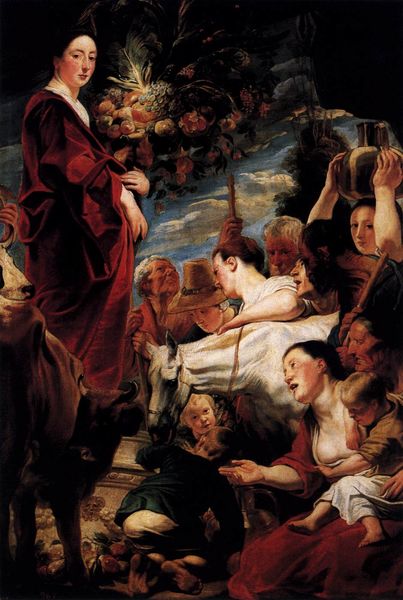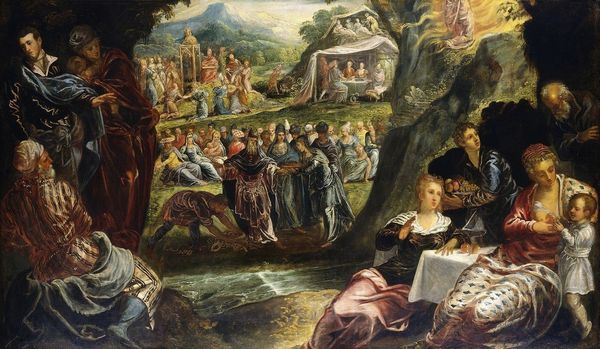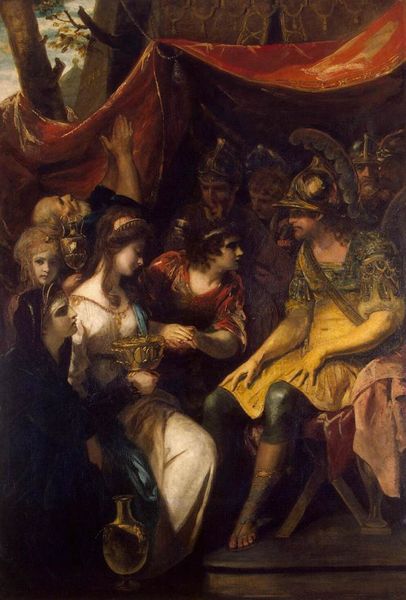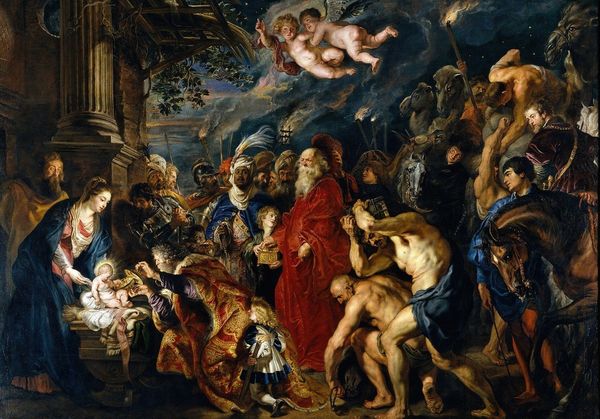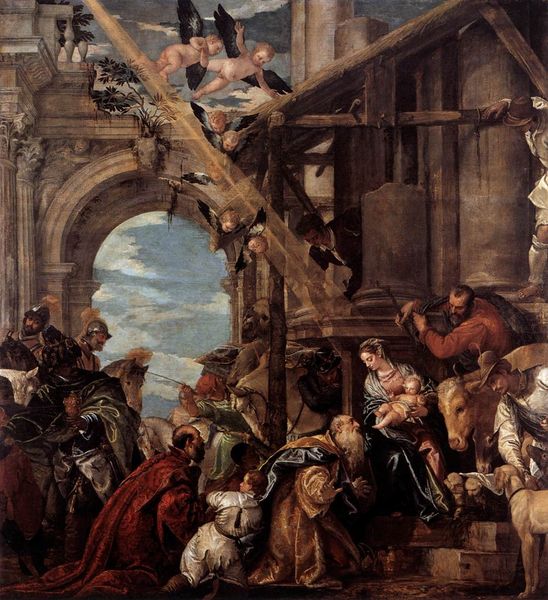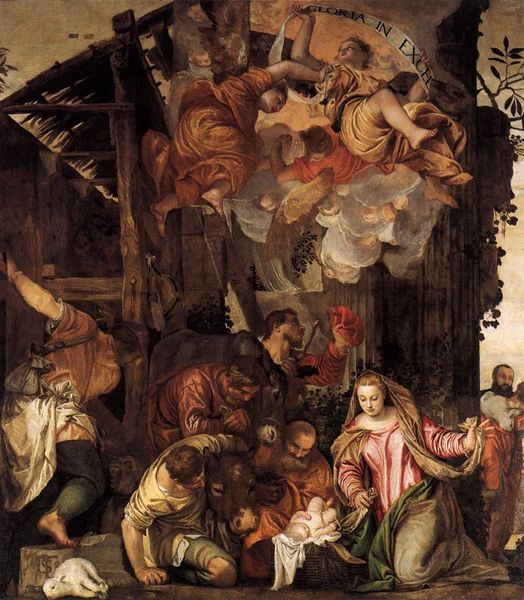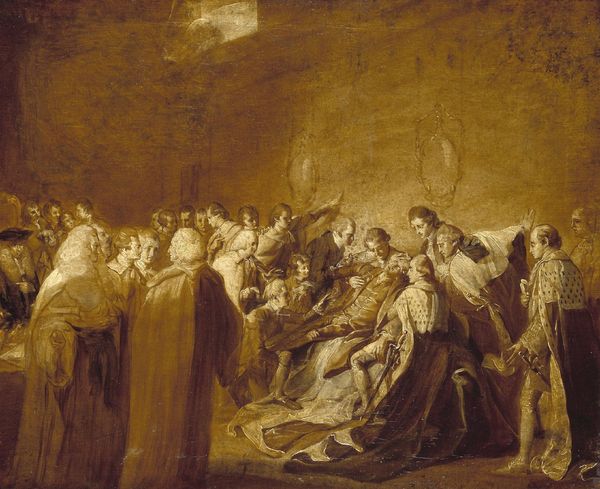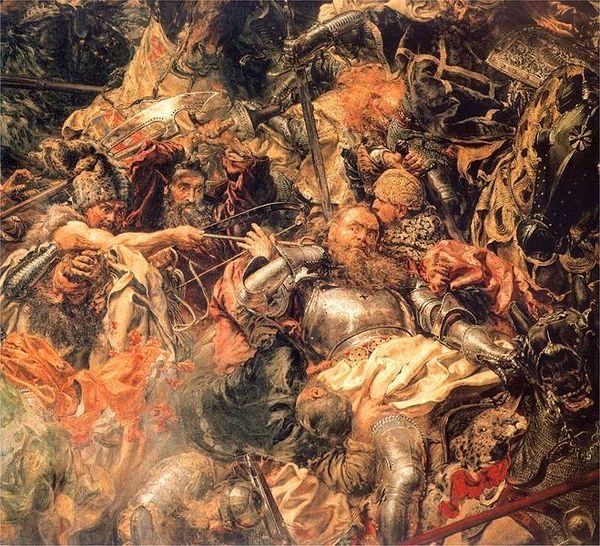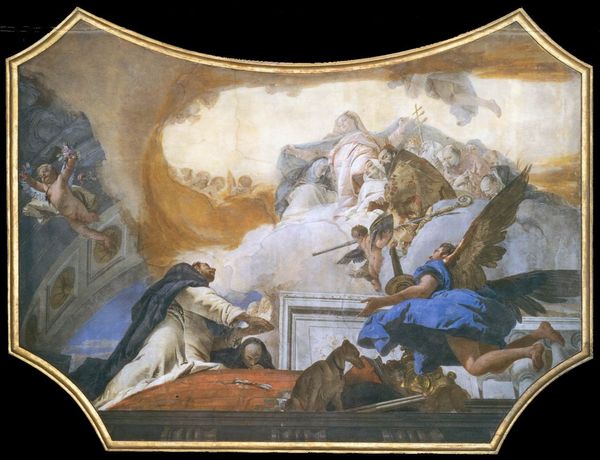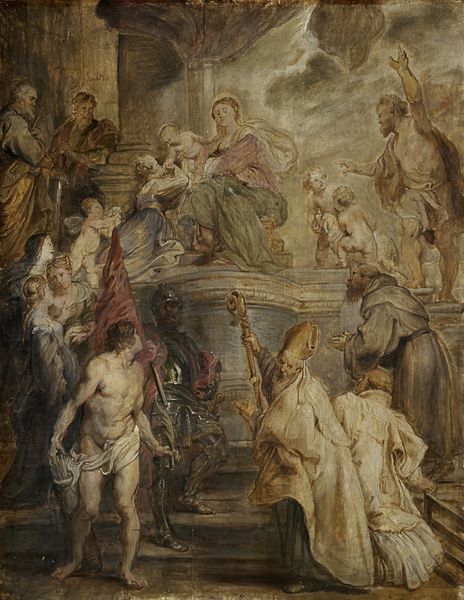
#
abstract expressionism
#
abstract painting
#
holy-places
#
charcoal drawing
#
possibly oil pastel
#
charcoal art
#
oil painting
#
fluid art
#
neo expressionist
#
acrylic on canvas
#
underpainting
#
mythology
Dimensions: 41 x 46 cm
Copyright: Public domain
Editor: Here we have Peter Paul Rubens's "King Solomon and the Queen of Sheba," painted around 1620. The composition feels incredibly dynamic, almost like a whirlwind of figures and textures. What's your initial take on this piece? Curator: The whirlwind, as you say, draws us into a nexus of cultural exchange. Think about what's being represented: Sheba's exotic treasures offered to Solomon, a symbol of wisdom and prosperity. This isn't just a meeting of monarchs, it's a confluence of worlds, each bringing its own symbolic language. The parrot, for example; do you recognize its significance here? Editor: I hadn't considered the parrot. Exotic pet? Something more? Curator: Exactly! The parrot, indigenous to Africa, brought to Europe, becomes a visual symbol of the Queen's origins, her ‘otherness.’ What of the people carrying vessels filled with treasure, are they simply staff or do they convey symbolic weight in the narrative of two cultures meeting? Editor: They appear to be struggling under the weight, which could be interpreted as the burden or cost of exoticism. Or, are we seeing their genuine reverence for the occasion depicted? Curator: Precisely. That inherent tension, that duality, it’s all within the symbols, waiting to be unraveled. The painting speaks volumes about power dynamics, about the allure and perceived danger of "the other," but more importantly, about the human tendency to project meaning onto the visual world. Editor: I see it now. Rubens isn’t just illustrating a biblical scene; he's exploring a cultural crossroads. Thanks for illuminating that. I’ll definitely carry this perspective when observing paintings from this era.
Comments
No comments
Be the first to comment and join the conversation on the ultimate creative platform.

